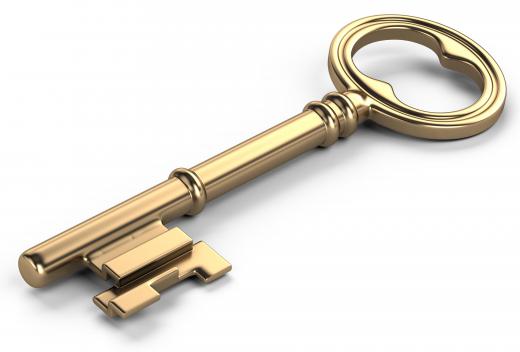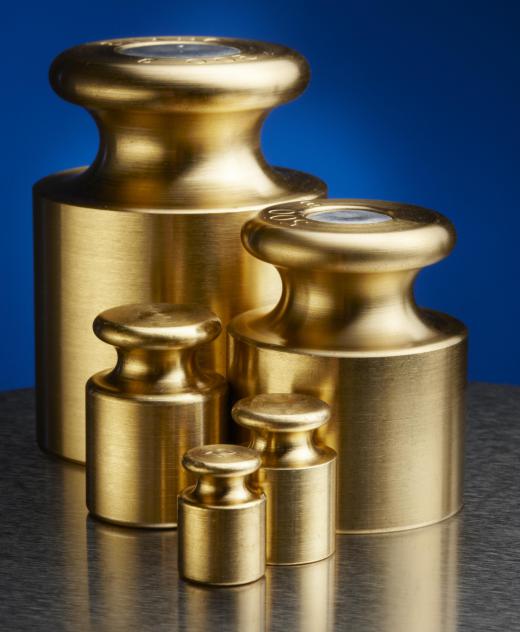Brass is a buttery yellow alloy of zinc and copper which has been manufactured for thousands of years in many parts of the world. Its uses vary depending on the percentages of zinc and copper, and which other metals have been added to alloy to bring out specific properties, but they include cartridge cases for weapons, pipes, weatherstripping, decorative accents on homes, musical instruments, and household ornaments. The color of the alloy will also vary, depending on the amount of zinc: brass gets lighter in color with additional zinc, and can reach a pale yellow stage.
Basic brass has approximately 67% copper and 33% zinc, making it stronger and more durable than copper, although not as strong as metals like steel. Alloys with even less zinc start to turn reddish in color, and are sometimes called red brass. Other metals are sometimes added to the alloy include lead to make the metal more workable by machine, tin, arsenic, and antimony to resist corrosion, and iron to make it harder and easier to forge.

Numerous terms are used to talk about this metal, including “cartridge brass” and "Dutch brass," but in the United States, brass is assigned a number under the Unified Numbering System. All alloys are first designated by the letter C, for copper, followed by five digits that provide specific information about that alloy. If the number starts with one through seven, the brass can be machined or forged, while numbers starting eights and nines refer to metals that can only be worked through casting.

Brass and bronze, an alloy made from copper and tin, have been made for thousands of years, although brass was often made by accident. Early intentional brass was actually made with calamine, a mineral which contains zinc. By 200 BC, China was differentiating between the two alloys, and in 300 AD, Germany and the Netherlands became well known in Europe for their brass. In 1746, the properties of zinc came to be more generally understood, and England patented the technique for producing the metal in 1781. By 1852, it had paved the way to early automatic weapons, as cartridges made from this metal alloy could expand to fill the breech of the gun during firing and then contract for rapid removal afterwards.

Commercial brass is usually lacquered to resist corrosion, as the metal is highly subject to corrosion. Caring for it around the home should take this lacquer into account, as you do not want to accidentally remove it. Never use highly abrasive cleaners, as they can scratch it. If you know that it is lacquered, use a specialized polish in very small amounts to lay a thin layer of protection on the brass, and buff it out. For raw metal, clean with alcohol or a very mild abrasive before polishing and rubbing with olive oil to resist corrosion. Should it become tarnished, use vinegar or ammonia to lift the tarnish, or use a mixture of lemon and salt to gently rub it out before polishing.
Ever since she began contributing to the site several years ago, Mary has embraced the exciting challenge of being a About Mechanics researcher and writer. Mary has a liberal arts degree from Goddard College and spends her free time reading, cooking, and exploring the great outdoors.

